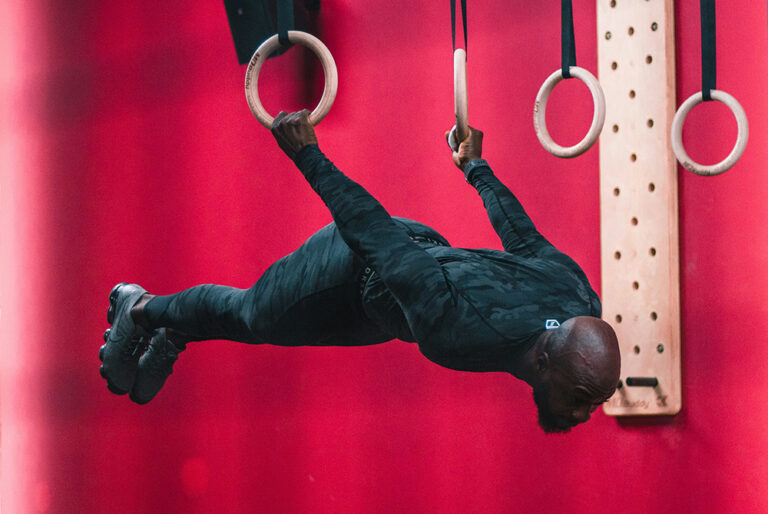Most folks assume that stuntmen spend most of their time falling off buildings and diving through flames. In reality, the role is far more about training and preparing so you can execute stunts flawlessly on set.
This means you have to be in peak physical condition when you get to the stage, as you’ll need to be at your best when the director asks you to scale the side of a wall or dodge an incoming train. As such, you’ll need to spend plenty of time in gyms and training rooms to increase your athletic potential and hone your craft as a stuntman.
You’ll also need to recover properly from demanding shoots and invest in recovery tools like sleep aids and nutritional support. You’ll also want to work with an athletic trainer who can help you bounce back from common injuries like sprained shoulders and broken fingers.
Refining Your Skills
If you want to last as a stunt performer in the film industry, you must constantly refine your professional skills to improve your offering when on set. This means that, at minimum, you should learn core stuntman skills like:
- High diving and swimming;
- Martial arts and fighting skills;
- Horse riding and driving.
Broadening your skillset makes you a more attractive proposition to hiring managers, as you’ll be far more adaptable than someone specializing in a single element of stunts like driving. If you’re unsure of where to start, get the ball rolling by picking up self-defense training that suits you, like:
- Traditional Styles: Karate and Kung-Fu look great in front of the camera due to their focus on balance, coordination, and flexibility.
- Grappling Arts: Arts like Sambo or Judo focus on throws, holds, and chokes. These are particularly popular in high-octane titles like “John Wick” and will also teach you how to fall safely while on set.
- Modern Combat Systems: MMA training resembles a blend of traditional and modern styles that will expose you to a wide range of techniques. This can come in handy when working as an extra on multiple shoots where you’ll be expected to perform varied choreographed fight scenes.
Learning a well-respected martial art can be particularly useful if you want to break into a specific genre, like apocalypse movies. You’ll hone your strength and coordination while grappling and striking, too, which can boost your athletic potential and improve your ability to execute daring stunts while on set.
Improving Athletic Ability

Working as a stuntman means investing significant effort into increasing your strength, agility, balance, and flexibility. You can’t expect to succeed on set if you’re not in shape, and you should make every effort possible to improve your athletic ability between films. Get the ball rolling by working with a personal trainer who is familiar with the demands of your profession and can help you work towards your athletic goals. In general, this means you’ll want to follow training programs like:
- Strength and hypertrophy programs are designed to help you build muscle.
- Yoga and Pilates classes to increase your flexibility and improve your balance/coordination.
- Cardio or circuit training classes improve your conditioning and ensure you can complete multiple takes to a high standard.
You’ll also want to invest in nutritional support, as true athletes are built in the kitchen rather than the gym. Nutritionists help you craft a food-first diet tailored to your needs and ensure you’re properly fueled for your next scene. Receiving support from a qualified nutritionist or dietician can help you return quicker from injuries, too, as you’ll need to eat a healthy, balanced diet to maintain your energy levels and overcome strains and bruises while on a lengthy shoot.
Bouncing Back from Injury

Being a stuntman will inevitably lead to injuries and accidents. While you should always complete a risk assessment of your own, throwing yourself off buildings and diving into deep waters comes with an inevitable degree of risk. Rather than letting this reality put you off, take proactive steps to ensure you can bounce back quicker than your peers.
Start by finding a trusted athletic trainer who is familiar with the injuries that stunt people face. This is key, as general doctors may struggle to understand the pressures of your profession and may not have the key skills you need to recover quickly. Working with a trusted trainer is particularly important following a head injury, as you need someone who can keep you safe on set by recognizing the symptoms of a concussion, which include:
- Headache;
- Confusion;
- Memory loss;
- Nausea;
- Blurred vision.
Recognizing a concussion is crucial, as failing to rest following a head injury has life-long repercussions. As such, you need a trusted member of the medical team in your corner when on set, as they will be able to advocate for you and keep you safe when you’re focused on executing daring stunts.
Conclusion
Preparing for life as a stuntman requires a proactive approach to training, nutrition, and recovery. Begin by building a strong martial arts foundation. This will help you become more balanced and will give you skills that you can lean on for life. As your calendar starts to fill up with shoots, consider reinvesting some of your earnings into nutritional and medical support. No matter what, look out for your health first.


